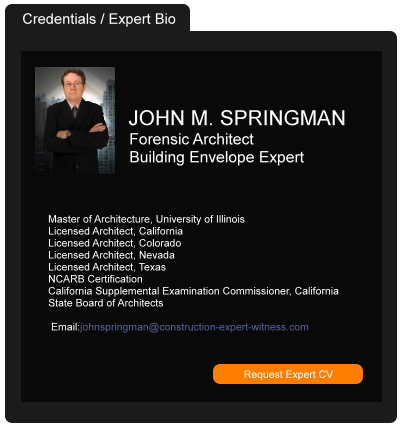The Other Side of the North Dakota Oil Boom: Evictions
May 13, 2024 —
Sarah Holder - BloombergWilliams County, North Dakota, is one of the biggest beneficiaries of the state’s fracking boom. In the past decade, millions of barrels of oil have been pumped from its land, and the population of its largest city, Williston, has doubled.
But as the oil flowed and workers poured in to staff the rigs, housing options quickly ran dry. The region’s uneven expansion has led to an eviction crisis for the county’s 39,000 residents, according to a recent paper from a group of sociologists affiliated with Princeton University’s Eviction Lab.
Williams County saw its eviction rate go from “nearly non-existent” in 2010 to over 7% a decade later, the study found. By 2019, at the height of its oil boom — when the state accounted for 11% of the country’s oil production — its eviction filing rate was comparable to that of large, renter-heavy cities like New York City or Philadelphia, according to Eviction Lab. Though oil production peaked in 2019, the problem hasn’t abated: From January through November 2023, more than 550 evictions were recorded by the Williams County Sheriff’s office, up around 30% from the previous full year.
Read the court decisionRead the full story...Reprinted courtesy of
Sarah Holder, Bloomberg
Texas Supreme Court Holds Stipulated Extrinsic Evidence May Be Considered in Determining Duty to Defend
May 10, 2022 —
Tred R. Eyerly - Insurance Law HawaiiResponding to certified questions from the Fifth Circuit, the Texas Supreme Court held that in limited circumstances, extrinsic evidence may be considered in determining the duty to defend. Monroe Guar. Ins. Co. v. Bitco Gen. Ins. Corp., 2022 Tex. LEXIS 148 (Tex. Feb. 11, 2022).
The two insurers each provided CGL coverage to the insured, 5D Drilling & Pump Service, Inc., at different times. BIitco provided two consecutive one-year CGL policies covering October 2013 to October 2015. Monroe's CGL policy covered 5D from October 2015 to October 2016.
5D was sued by David Jones for breach of contract and negligence, seeking damage allegedly resulting from 5D's drilling operations on Jones's property. Jones contracted with 5D in the summer of 2014 to drill a 3600-foot irrigation well on his farmland. The complaint did not detail when 5D's purportedly negligent acts occurred or even when 5D began or stopped the work.
Read the court decisionRead the full story...Reprinted courtesy of
Tred R. Eyerly, Damon Key Leong Kupchak HastertMr. Eyerly may be contacted at
te@hawaiilawyer.com
eRent: Construction Efficiency Using Principles of the Sharing Economy
November 06, 2018 —
Aarni Heiskanen - AEC BusinesseRent has developed a digital equipment management portal for construction equipment. At the very heart of the concept lies the resource efficiency that can be achieved using principles of the sharing economy.
Olli Aaltonen, CEO of eRent Solutions, is confident about the platform his company has created: “Besides offering a digital solution to a rather inefficient workflow in the construction business, we are also introducing a way to track and manage your construction equipment, whether it is owned, rented, or leased. The cost savings are obvious we believe our tracking feature brings our customers even more value.”
Read the court decisionRead the full story...Reprinted courtesy of
Aarni Heiskanen, AEC BusinessMr. Heiskanen may be contacted at
aec-business@aepartners.fi
Wildfire Insurance Coverage Series, Part 7: How to Successfully Prepare, Submit and Negotiate the Claim
August 22, 2022 —
Scott P. DeVries & Yosef Itkin - Hunton Insurance Recovery BlogPrior posts in this series have discussed insurance coverage issues that pertain directly to wildfire claims, but we have not yet addressed how one proceeds following a loss. In this post in the Blog’s Wildfire Insurance Coverage Series, we discuss the preparation, submission and negotiation of the insurance claim.
Preparing a Claim
As different policies provide different timelines, where possible, it is advisable to submit the claim as soon as reasonably possible. Insurers commonly cite late submission as a basis for denial with jurisdictions varying on the import of “late” submission.
Insurers have a right to reasonable documentation of a claim before paying. Often, they will decline to consider a claim on its merits until such documentation is provided. The policy will specify whether to submit a hard copy or file online, but either way it is advisable to maintain a copy online or in a remote geographic location.
Reprinted courtesy of
Scott P. DeVries, Hunton Andrews Kurth and
Yosef Itkin, Hunton Andrews Kurth
Mr. DeVries may be contacted at sdevries@HuntonAK.com
Mr. Itkin may be contacted at yitkin@HuntonAK.com
Read the court decisionRead the full story...Reprinted courtesy of
Harmon Towers to Be Demolished without Being Finished
October 02, 2013 —
CDJ STAFFEngineering.com looks at why the Harmon Tower in Las Vegas will be coming down at some point in the future. Construction stopped, unfinished in 2008. Taking the building down will cost about $400 million, which the building’s owner feels that the developer should pay.
Inspectors concluded that the building did not meet the earthquake specifications for Las Vegas. The contractor claimed that the fault was due to the design specifications and that the supports were further weakened during destructive testing.
Read the court decisionRead the full story...Reprinted courtesy of
Kadeejah Kelly Named to The National Black Lawyers’ “Top 40 Under 40” List
October 17, 2022 —
Lewis BrisboisNew York, N.Y. (October 6, 2022) – New York Associate
Kadeejah J. Kelly was recently named to The National Black Lawyers (NBL) “Top 40 Under 40” list.
The NBL “Top 40 Under 40” recognizes the most talented black attorneys under the age of 40 who have an outstanding reputation among peers, the judiciary and the public. The honorees on this list are nominated from leading lawyers, current members, and Executive Committee members.
Ms. Kelly is a member of the General Liability and Professional Liability Practices. She has extensive experience defending owners, contractors, developers and corporations in high exposure construction cases including New York Labor Law matters, premises liability and construction defect claims. She also has experience defending malpractice claims against attorneys, accountants, architects, engineers, funeral home directors and other miscellaneous professionals.
Read the court decisionRead the full story...Reprinted courtesy of
Lewis Brisbois
Colorado’s Federal District Court Finds Carriers Have Joint and Several Defense Duties
July 31, 2013 —
Tred Eyerly, Insurance Law HawaiiAn issue that has plagued builders in Colorado construction defect litigation is the difficulty of getting additional insured carriers to fully participate in the builder’s defense, oftentimes leaving the builder to fund its own defense during the course of the litigation.
Many additional insurers offer a variety of positions regarding why they will not pay for fees and costs during the course of a lawsuit. Some insurers argue that, until after trial, it is impossible to determine its proper share of the defense, and therefore cannot make any payments until the liability is determined as to all of the potentially contributing policies. (This is often referred to as the “defense follows indemnity” approach.) Others may make an opening contribution to defense fees and costs, but fall silent as fees and costs accumulate. In such an event, the builder may be forced to fund all or part of its own defense, while the uncooperative additional insured carrier waits for the end of the lawsuit or is faced with other legal action before it makes other contributions.
Recent orders in two, currently ongoing, U.S. District Court cases provide clarity on the duty to defend in Colorado, holding that multiple insurers’ duty to defend is joint and several. The insured does not have to go without a defense while the various insurers argue amongst themselves as to which insurer pays what share.
Read the court decisionRead the full story...Reprinted courtesy of
Tred EyerlyTred Eyerly can be contacted at
te@hawaiilawyer.com
California Clarifies Its Inverse Condemnation Standard
December 30, 2019 —
Gus Sara - The Subrogation StrategistIn City of Oroville v. Superior Court, 446 P.3d 304 (Cal. 2019), the Supreme Court of California considered whether the City of Oroville (City) was liable to a dental practice for inverse condemnation damages associated with a sewer backup. The court held that in order to establish inverse condemnation against a public entity, a property owner must show that an inherent risk in the public improvement was a substantial cause of the damage. Since the dental practice did not have a code-required backwater valve — which would have prevented or minimized this loss — the court found that the city was not liable because the sewage system was not a substantial cause of the loss. This case establishes that a claim for inverse condemnation requires a showing of a substantial causal connection between the public improvement and the property damage. It also suggests that comparative negligence can be a defense to inverse condemnation claims.
In December 2009, a dental practice, WGS Dental Complex (WGS), located in the City, incurred significant water damage as a result of untreated sewage from the City’s sewer main backing up into WGS’ building. WGS submitted a claim to its insurance carrier, The Dentists Insurance Company (TDIC) and, in addition, sued the City for its uninsured losses, alleging inverse condemnation and nuisance. TDIC joined the litigation, alleging negligence, nuisance, trespass and inverse condemnation. Under California law, when a government entity fails to recognize that an action or circumstance essentially amounts to a taking for public use, a property owner can pursue an inverse condemnation action for compensation. The City filed a cross-complaint against WGS for failing to install a code-required backwater valve on their lateral sewer line, which would have prevented or minimized the backup.
The City filed a motion for summary judgment, which the trial court denied. WGS then sought a judicial determination on the issue of inverse condemnation. The City presented evidence that the sewage system was designed in accordance with industry standards, and that WGS failed to comply with the City’s plumbing code by failing to install a backwater valve on its private sewer lateral. The trial court found the City liable for inverse condemnation because the blockage that caused the backup originated in the City’s sewer line. The court held that the blockage was an inherent risk of sewer operation. The Court of Appeals affirmed the decision, holding that the City would have had to prove that the WGS’s lack of a backwater valve was the sole cause of the loss in order to absolve itself of liability.
Read the court decisionRead the full story...Reprinted courtesy of
Gus Sara, White and WilliamsMr. Sara may be contacted at
sarag@whiteandwilliams.com


































































